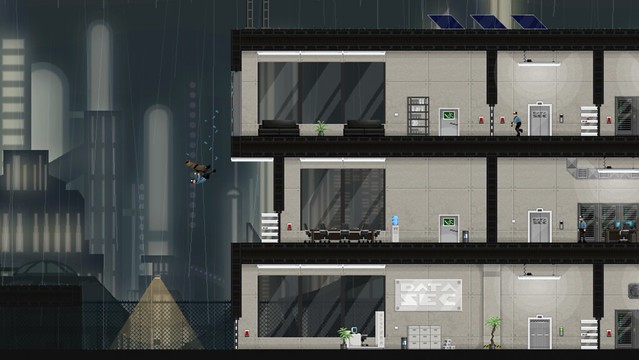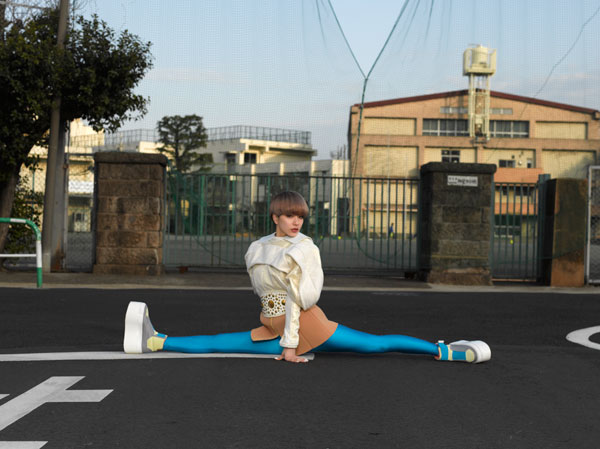As game developers, we often talk about the technical aspects of building games; but every once in a while I think it’s prudent that we discuss games at a more fundamental level. Today, I’d like to talk about how games become fun.
This is certainly a divisive topic, and clearly there’s no one answer. There’s no formula you can follow, no library you can use to “import fun”. When I was doing the research for this article, I asked my friend what he thought and he said “that’s like asking a comedian how to be funny”, the implication being that it’s much more art than science.
There are surprisingly few people studying the fun of video games, considering the market size and broad applications of the ability to make things fun. But the (growing) few who have studied this have certainly come up with interesting observations.
The brain is a pattern learning machine.
The human brain excels at discovering and remembering patterns. It’s what we do all day long. Whenever you recognize an object or a person, that’s your brain calling up a previously learned pattern. The same holds for whenever you perform a task, write an article, do a skateboard kickflip, or drive to your parents’ house.
Since pattern learning is so important for your survival, your brain has a way to reward you when you learn a new pattern: it releases dopamine. It feels good to learn something new! That’s your brain’s way of incentivizing you to keep learning stuff. And for good reason; learning things is hard, and if there were no incentive, we’d just sit around staring at the wall all day.
Game designers ended up taking advantage of this learning/reward mechanism. It feels great to discover a new secret in a level, it’s really rewarding to figure out Bowser’s movement pattern and finally defeat him, and “getting the hang” of the games controls is a good feeling.
Now we understand that we should give our players patterns to learn and master, because learning those patterns is satisfying and fun for the players. But patterns that are too difficult to learn are a turnoff. Have you played Dwarf Fortress yet?
To avoid overwhelming players with brand new patterns and concepts (or, “game mechanics” and “ludemes”) for each game that gets built, it may be better to simply evolve upon game styles and mechanics that are already out there. Players won’t feel alienated or in over their heads, but they’ll still get the joy of learning a game’s new take on a mechanic, or a unique combination of game mechanics and ludemes.
It should seem natural, then, that as games evolved, so did their mechanics. Every once in a while a game would come out that invented a new mechanic, but more often than not, new games would simply expand upon an existing mechanic or try to combine established mechanics in new ways.
When Pong came out, it popularized the “ball and paddle” mechanic. Eventually, someone said “we should make a 1-player Pong”, and invented Breakout. It still used the ball and paddle mechanic, but the opponent was a brick wall instead of another paddle. Thus was born a unique game that nobody had ever seen before, but the core mechanic was still familiar to players.
Donkey Kong popularized the platformer mechanic, and a few years later Mario added to that with more in-depth gameplay and a few other mechanics (the “secret area” mechanic and the “player upgrade” mechanic, for instance).
The Legend of Zelda popularized the open world RPG mechanic, and also brought in the melee combat mechanic, player upgrade mechanic, secret area mechanic, and even an in-game currency mechanic (some of which had already existed, others were new at the time).
If Zelda’s mechanics all sound familiar, that’s because they’re still in use today! Those mechanics have been used over and over again, in different permutations, in many games since then. Those mechanics are also seen in the Elder Scrolls series, Diablo, and even Grand Theft Auto. Those bestsellers didn’t need to reinvent the wheel: they just needed to concentrate on great story, gameplay, and immersive worlds. Magic, experience and leveling, currency, melee combat, open worlds, and nonlinear story were all established game mechanics by that point.
It might seem that the two things I’ve talked about “make your players learn new patterns” and “use established patterns so as not to alienate players” are statements at odds with one another. However, they form a nice thesis: games should be easy to learn and difficult to master. (“Should” is a strong word; I’d rather say that many–but not all–groundbreaking games were easy to learn but difficult to master.)
Easy to learn, difficult to master.
Mastery is much more than being able to beat a game. Mastery comes from having a deep understanding of the underlying mechanics of the game, and using that to not only beat the game, but to do it handily and gracefully. This also implies that a game that can be mastered has a certain level of depth, and that allows its players to keep coming back and try to learn more about the game.
Chess is the ultimate example of this mantra. There are only 12 or so simple rules that define the game of chess (7 for movement, and a couple extra for check, checkmate, castling, pawn promotion, and something called “en passant”, which I hadn’t heard of until now). But mastering chess takes years of dedicated practice and learning. And because the simple rules combine in so many different ways, almost every chess game is different, giving it infinite replay value.
Compare chess to tic-tac-toe, which is “easy to learn; no mastery”. You’ll play it a couple of times when you’re bored, but it’ll never be a game you spend too much time thinking about. It’s also not really fun. It’s easy to learn, but there’s no depth and very little replay value.
Chess and tic-tac-toe both start off easy (though, admittedly, chess is slightly harder to start playing), but once the player begins progressing in skill is when the differences become apparent. Chess grows with the player–the learning curve is comfortable but still takes you somewhere–whereas tictactoe remains at the same depth forever.
One of the best examples of great learning curve design is Super Mario Bros for NES. When you booted up Mario, there were no instructions (well, there was a booklet, but we rarely read those!). There were no “hop on the bad guy to kill it!” popups like there are in games today.
Instead, the first level was meticulously designed to teach you everything you need to know about the movements of the game. First you walk, then you figure out you can run. You try jumping. You run into a goomba and die. You realize you need to jump on the goomba, and then you learn that you can break blocks by jumping into them. You’ll also discover the mushroom caps, and the fire flowers, and if you’re a curious player you’ll quickly discover the secret area in the sewer pipe. It’s all there, right in the first level, as a gentle introduction to the rest of the game. It takes only five minutes to figure out nearly everything you need to know about Mario, and then the game takes you through progressively more difficult levels so that you keep learning and getting better with the game.
Early games like Mario were also much more rewarding to finish than modern games because there were no save points and failure was punished. If you lost a life, you started from the beginning of the level, and if you lost all your lives you had to start from the beginning of the game! Obviously this isn’t practical for very long modern games (imagine having to restart Skyrim after dying three times?), but it helped early games reinforce the notion that “failing = bad, winning = good”. It made many players obsessed with beating a game or even a level (“Auuugh! So close! Let me try just once more…”). That’s also why cheats like GameGenie were fun for a little while but would eventually become boring. It took away the risk and punishment of failure, and in turn dulled the joy of winning.
Key Takeaways
You could write entire textbooks on what makes games fun, but my goal here was to show you just a few of the important patterns and techniques you can observe in the groundbreaking and successful early games.
The gaming landscape is a little different now; some games today are fun just because the world is so big, or the sound design is great or the graphics are beautiful. There are also quite a few wonderful games today that win on just ambiance or casual gaming (“Solar 2” is an example of a relaxing ambiance game that I love; Left 4 Dead is another great casual game that doesn’t have too much mastery depth to it). Some games are great just because they give you something to do on your phone while you wait for your train to come (Subway Surfers et al).
If we were to boil this down to a few key points, they would be:
- Don’t overwhelm. If your goal is to invent a brand-new game mechanic, then try not to toss too much other stuff in there. Many games have been successful with just one or two mechanics. And if you’re inventing a new mechanic, odds are you won’t have the time to make sure everything else is up to snuff.
- Take advantage of the human brain. People enjoy learning patterns, getting the hang of controls, figuring stuff out, and discovering secrets. Take advantage of your players’ brains’ rewards system, and give them stuff to discover!
- Use established mechanics. Not every game needs to invent something new. By finding your own unique combination of existing game mechanics you can simultaneously make your players feel comfortable while still giving them something to learn and appreciate. This also lets you concentrate on story, gameplay, and ambiance.
- Nail the learning curve. Take a hint from chess and Super Mario Bros and let your game evolve with your player. Your player should constantly be in a position of being just slightly challenged, with a couple of few easy levels thrown in here and there, that way they constantly feel like they’re learning and getting better.
- Use rewards and punishment. By making failing suck, you make winning feel even better. But be careful with this one; today’s gamers aren’t as patient as they were 25 years ago, so don’t make the punishments too harsh. Even simple short cinematic scenes that demonstrate the glory or shame of success or failure can be enough.






















































